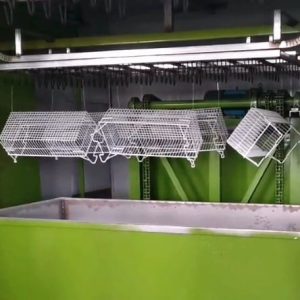Thermoplastic dip coating for complex-shaped parts

What is thermoplastic dip coating?
Thermoplastic dip coating is a process where a heated thermoplastic material is melted and then applied to a substrate through dipping. The substrate, which is usually made of metal, is preheated to a specific temperature and then dipped into a container of molten thermoplastic material. The substrate is then withdrawn and allowed to cool, which causes the thermoplastic material to solidify and adhere to the surface of the substrate.
This process is commonly used for coating small or complex-shaped parts, such as wire racks, handles, and tool grips. It is often used in manufacturing to improve the durability, corrosion resistance, and aesthetics of the coated parts.
Advantages
Some advantages include:
- Cost-effective: The process is relatively low-cost and can be used for high-volume production.
- Good adhesion: The thermoplastic material forms a strong bond with the substrate, providing good adhesion and resistance to chipping, peeling, and cracking.
- Versatile: A wide range of thermoplastic materials can be used for dip coating, allowing for customization of properties such as hardness, flexibility, and chemical resistance.
- Environmentally friendly: Thermoplastic materials are often recyclable and can be reused, reducing waste and environmental impact.
PECOAT thermoplastic polyethylene dip coatings are widely used on industry fence and home appliance.
